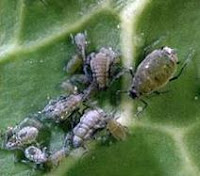.
Echinoderm, common name for about 6000 living species constituting a phylum of marine animals, such as starfish, brittle stars, sea urchins, sand dollars, and sea cucumbers. They usually show a superficial five-part radial symmetry, and generally are equipped with peculiar tube feet. The phylum name is derived from the spiny skin.
An echinoderm such as the starfish typically has a mouth surrounded by five arms that bear minute, fleshy tube feet with which the animal clings and crawls. The tube feet are supported by a complex internal hydraulic system that is inflated with seawater. Some echinoderms, especially brittle stars, crawl or swim by moving their arms. Often, as in sea urchins, rows of tube feet extend along the body surface, and arms are absent. The spines are particularly well developed in sea urchins. The skeleton, made up of calcium carbonate, may form a large proportion of the body, or, as in some sea cucumbers, it may be greatly reduced. The fossil record shows that the five-rayed pattern is a late evolutionary acquisition, and deviations from it are common. The animals have a well-developed gut, but the nervous and circulatory systems are simple. Echinoderms are slow-moving and without complex behavior patterns.
Echinoderms are common on the ocean bottom at all depths; in the deep sea they often make up the bulk of living material. They may be grazers (most sea urchins), feeders on small particles (many brittle stars), or predators (most starfish). Starfish and a few others are pests, as when found in oyster beds. Sea cucumbers and sea urchins are eaten by humans.
Scientific classification: Echinoderms make up the phylum Echinodermata. The living echinoderms are commonly divided into two subphyla. The stalked or attached Pelmatozoa consist of the single class Crinoidea, or sea lilies and feather stars, with 650 species. The free-living Eleutherozoa consist of the classes Holothuroidae, or sea cucumbers, with 900 species; Echinoidea, or sea urchins and sand dollars, with 850 species; Asteroidea, or starfish, with about 1500 species; and Ophiuroidea, or brittle stars, with about 2000 species. Many authorities, however, unite Asteroidea and Ophiuroidea into a single class, Asterozoa (or Stelleroidea). About 20 extinct classes are found in the fossil record.
Echinoderm, common name for about 6000 living species constituting a phylum of marine animals, such as starfish, brittle stars, sea urchins, sand dollars, and sea cucumbers. They usually show a superficial five-part radial symmetry, and generally are equipped with peculiar tube feet. The phylum name is derived from the spiny skin.
An echinoderm such as the starfish typically has a mouth surrounded by five arms that bear minute, fleshy tube feet with which the animal clings and crawls. The tube feet are supported by a complex internal hydraulic system that is inflated with seawater. Some echinoderms, especially brittle stars, crawl or swim by moving their arms. Often, as in sea urchins, rows of tube feet extend along the body surface, and arms are absent. The spines are particularly well developed in sea urchins. The skeleton, made up of calcium carbonate, may form a large proportion of the body, or, as in some sea cucumbers, it may be greatly reduced. The fossil record shows that the five-rayed pattern is a late evolutionary acquisition, and deviations from it are common. The animals have a well-developed gut, but the nervous and circulatory systems are simple. Echinoderms are slow-moving and without complex behavior patterns.
Echinoderms are common on the ocean bottom at all depths; in the deep sea they often make up the bulk of living material. They may be grazers (most sea urchins), feeders on small particles (many brittle stars), or predators (most starfish). Starfish and a few others are pests, as when found in oyster beds. Sea cucumbers and sea urchins are eaten by humans.
Scientific classification: Echinoderms make up the phylum Echinodermata. The living echinoderms are commonly divided into two subphyla. The stalked or attached Pelmatozoa consist of the single class Crinoidea, or sea lilies and feather stars, with 650 species. The free-living Eleutherozoa consist of the classes Holothuroidae, or sea cucumbers, with 900 species; Echinoidea, or sea urchins and sand dollars, with 850 species; Asteroidea, or starfish, with about 1500 species; and Ophiuroidea, or brittle stars, with about 2000 species. Many authorities, however, unite Asteroidea and Ophiuroidea into a single class, Asterozoa (or Stelleroidea). About 20 extinct classes are found in the fossil record.



































